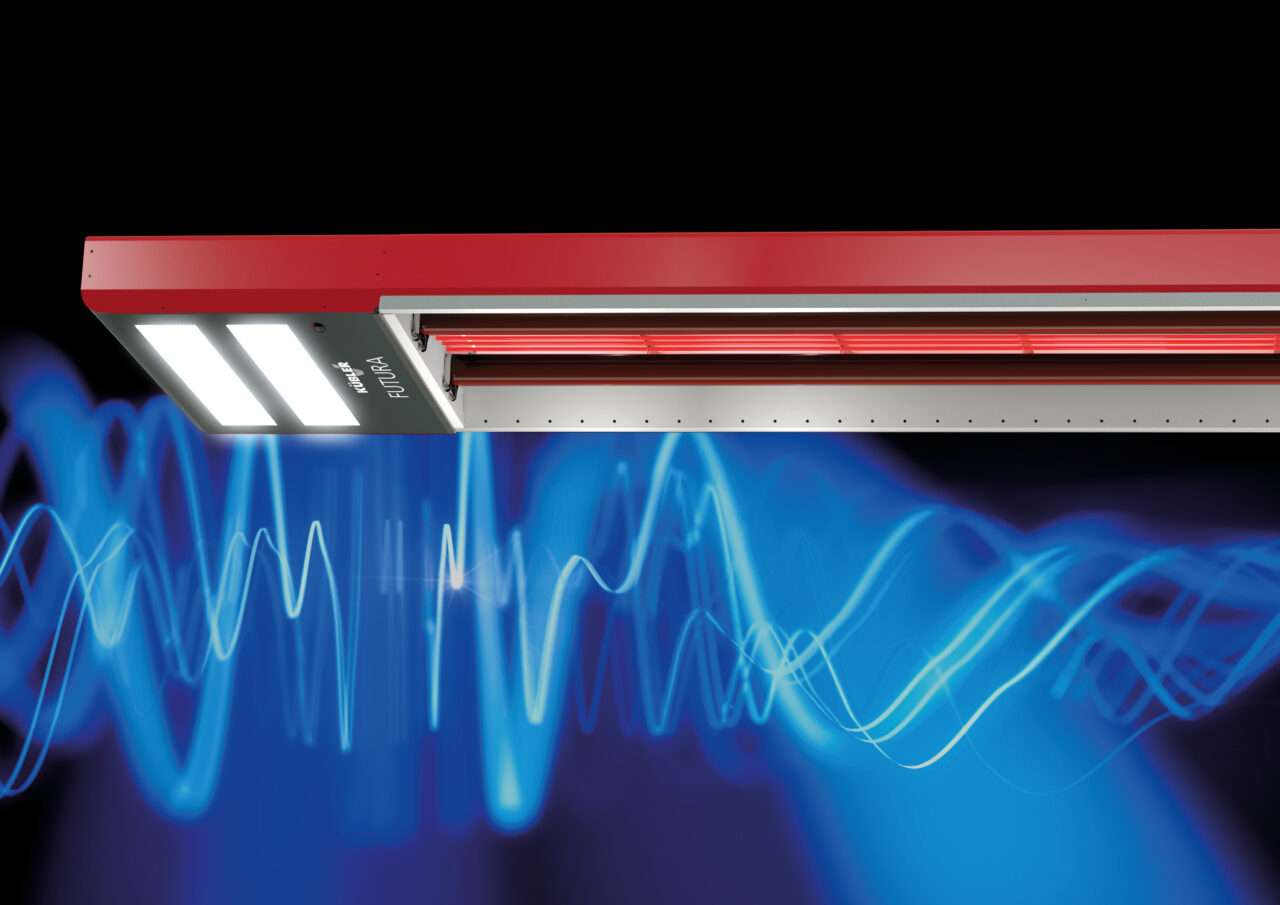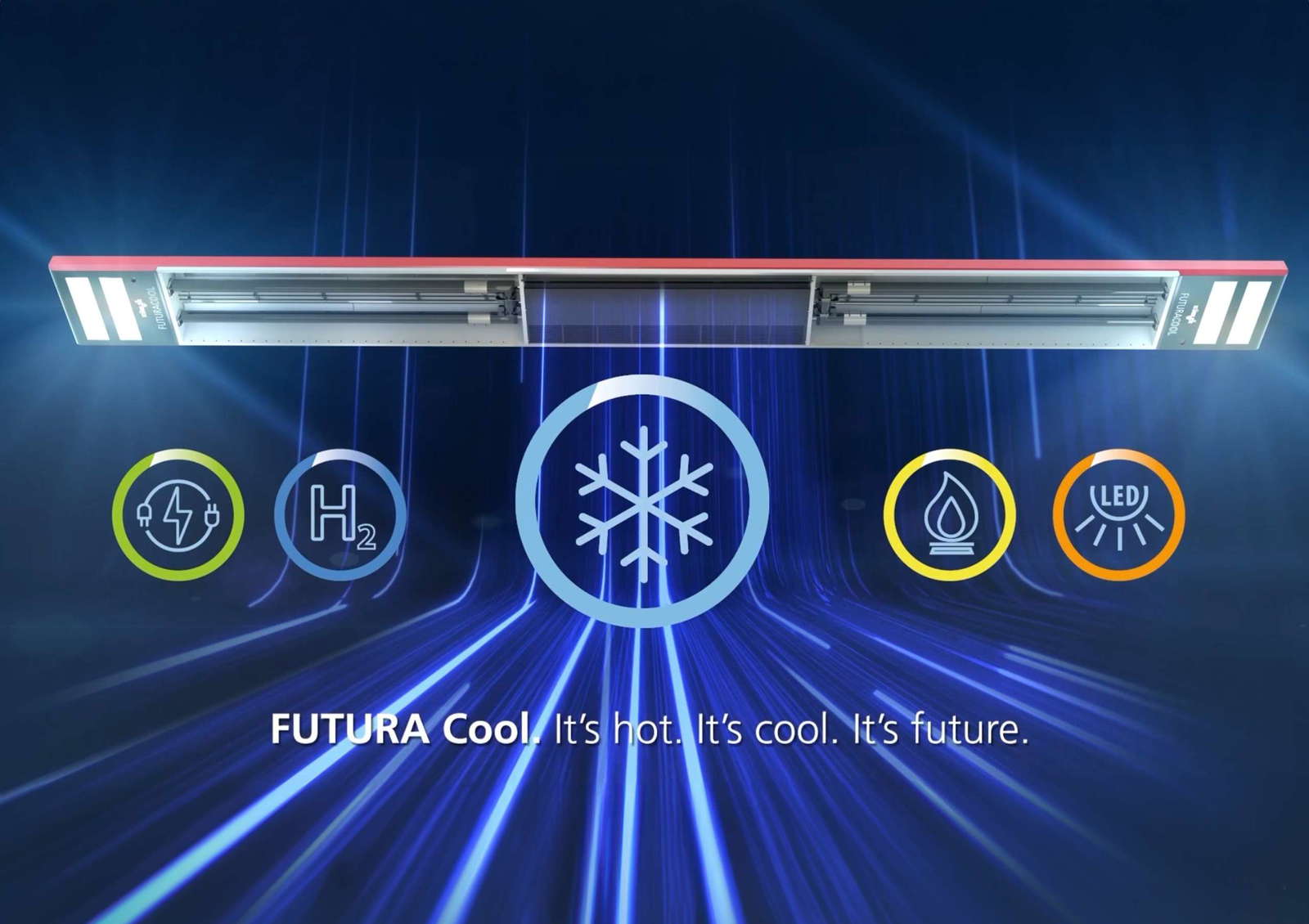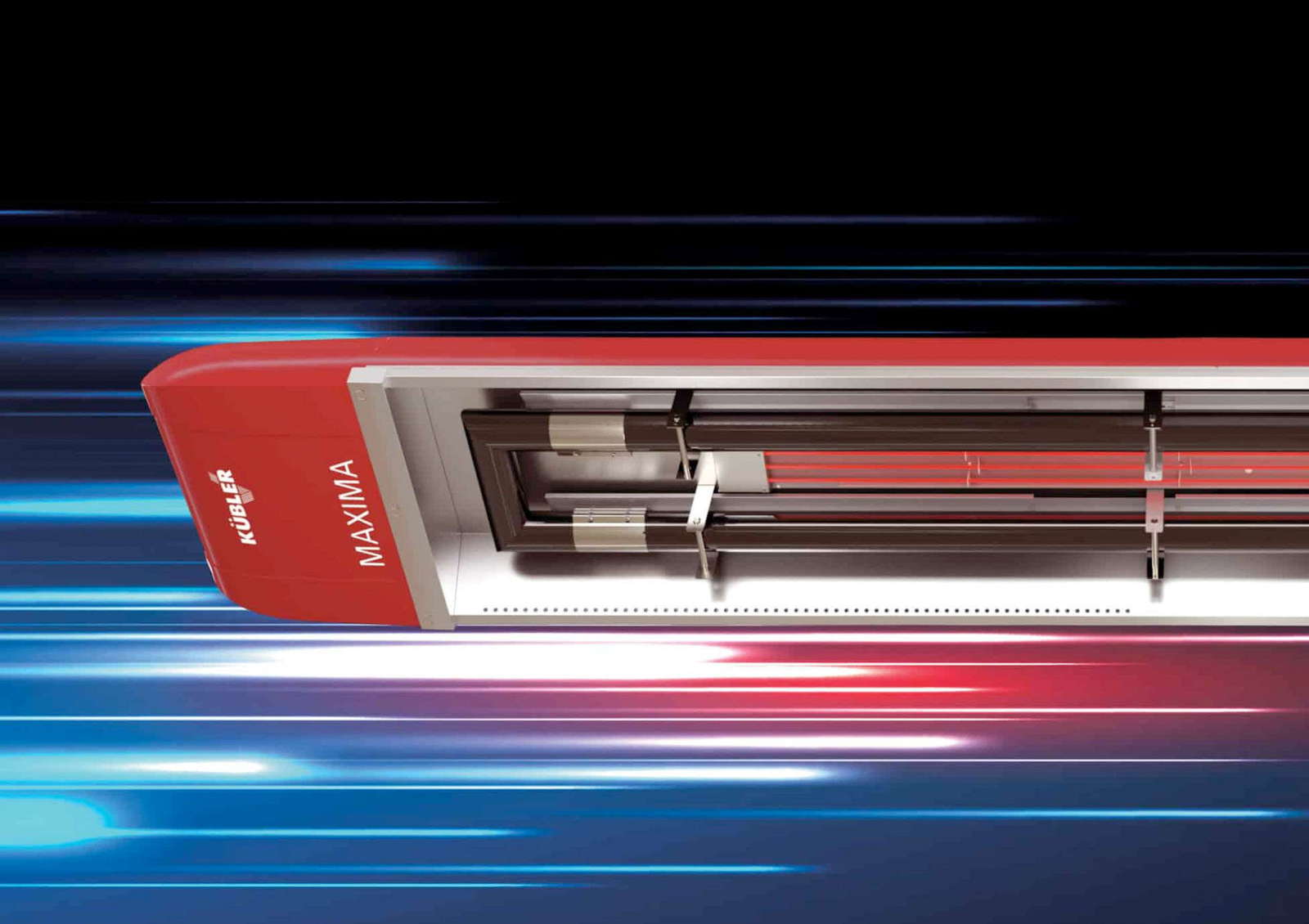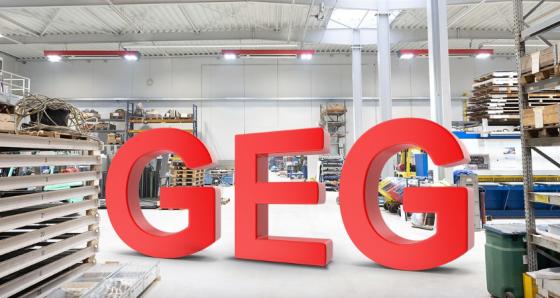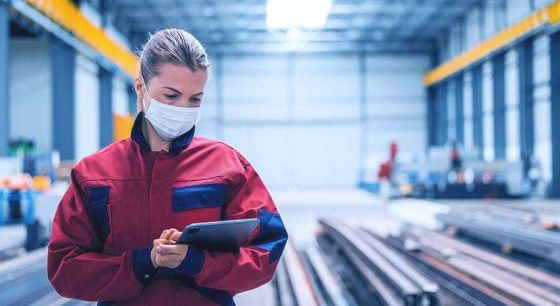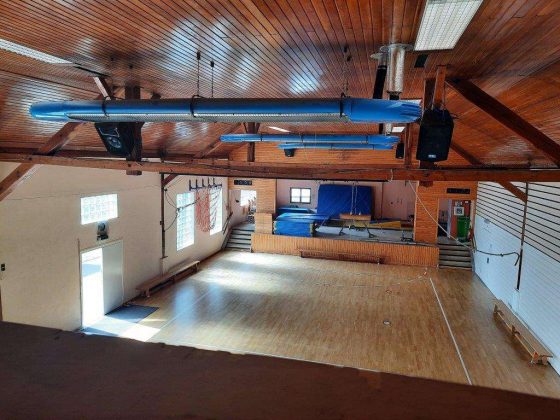Hall heaters - solutions for event halls and exhibition rooms
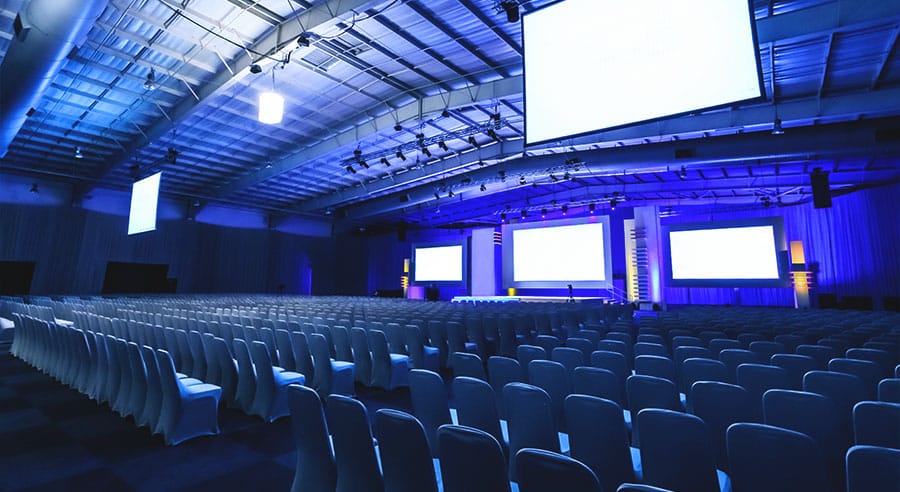
Concerts, art exhibitions and corporate events are increasingly taking place in unusual locations - for example in old fish factories, heating plants or in tents on historic factory sites. The ambience is often a mixture of rustic and modern. An atmosphere that only unfolds, however, when the temperature is right. After all, who likes to drink Chardonnay with cold feet? Or eat a salmon canapé with a chilled nose?
That's right, nobody. And that's why most event organizers strive to maintain a comfortable temperature. They experiment with various heating solutions. For example, with mobile warm air heaters that blow heated air into tents via warm air hoses. Or with mushroom heaters, near which guests warm themselves with a gas flame.
The problem: many hosts are not really satisfied with warm air systems as hall heaters
Because warm air has a mind of its own. It is distributed unevenly in halls and tents, mixes with cold layers of air and creates a draught on guests' legs, arms and necks. "Darling, do you think we should leave so slowly?" is a sentence that is uttered far too early in the evening at worst. Not the only drawback.
The electricity bill is also often unnecessarily high. This is because warm air escapes towards the ceiling - i.e. to where it does no one any good and only causes energy costs. Creating different temperature zones, such as a cool zone at the buffet and a warmer one in the common areas? Virtually impossible with air that is constantly mixing. Last but not least, many warm air systems do not look very stylish as hall heaters, more like relics from the 1980s. They often cannot be integrated into a modern environment without a visual break. And in the worst case, they are so loud with their humming and hissing that they disturb the ambience.
Targeted and economical heating: infrared heaters reshuffle the cards
For hosts who are not satisfied with warm air systems because they are too loud and unattractive, consume too much energy and do not even satisfy many guests, there is an alternative solution: Infrared heaters. These hall heaters are reshuffling the cards when it comes to heating event halls and exhibition spaces. Why?
Because their functional principle differs fundamentally from that of warm air systems. Infrared systems do not heat the air. Instead, they generate electromagnetic waves that are converted into heat as soon as they hit solid objects - such as guests or tables, benches and stages. The advantage: hosts no longer have to heat the entire air in a hall or a large tent to create a pleasant temperature, but can concentrate specifically on the area of use. As this is usually many times smaller, you save a lot of energy. But that's not all.
Bringing the pleasure of pleasant sunlight indoors
Do you know this? You go for a walk on a fall day. The air is pleasantly cool, but at the same time you can feel the warm rays of the sun on your skin. A feel-good atmosphere that infrared heaters also create indoors. Guests find the infrared heat particularly pleasant because it corresponds to the natural heating principle of the sun - without dry heating air, dust turbulence and draughts.
The eye is not neglected either. Modern infrared heaters can be discreetly integrated into the surroundings or emphasized as a design element in their own right. In addition, the hall heaters are whisper-quiet and would not even disturb Ludwig von Beethoven's 15th string quartet. They are therefore perfect for controlling the temperature of large marquees, event halls and exhibition rooms.
Hamburg fish auction hall pampers guests with infrared heat
Do you know the fish auction hall at the St. Pauli fish market? It is a magnet for night owls and tourists from all over the world. This is because visitors come here every Sunday from dawn to buy fish sandwiches and other delicacies from hundreds of food stalls and food trucks. They enjoy eating and drinking in a cheerful get-together on beer benches in the fish hall - with live music until twelve o'clock at night. An inviting backdrop that is also appreciated by organizers of cinema festivals, theater and reading days and the multi-day light festival. Events with up to 4,200 people regularly take place in the 4,100 m2 hall.
And the temperature in the fish auction hall is always just right. This is because the operators have installed infrared radiant heaters from the OPTIMA painted to match the style of the architecture and suspended from specially designed, invisible wire ropes. The devices heat the 103 meter long and 23 meter wide hall, which is eleven meters high at the dome, with a total output of 700 kW. The heat from the hall heaters is concentrated specifically on the area of use, i.e. the tables, benches, food stands and, of course, the guests themselves.
The thousands of cubic meters of air above this area, on the other hand, are cool without disturbing anyone. Visitors' ears are also spared any annoying noise. KÜBLER supplied the radiant heaters in a super-silent design and also soundproofed the exhaust fans. This reduces the noise effect from industry standard to almost concert level.
Fish auction hall saves 50,000 euros in heating costs per year
However, the operators of the fish auction hall not only benefit from the modern, unobtrusive appearance and quiet operation of the hall heaters. OPTIMA also reduces energy consumption in the fish auction hall - by up to 50 percent compared to conventional systems. Even more energy can be saved with the digital control system R.O.S.S.Y heating systems can be controlled with pinpoint accuracy and preheating times can be reduced to an environmentally friendly minimum depending on the weather periods and seasons.
The bottom line is a saving in heating costs of 50,000 euros per year. And extrapolated over the life cycle, a saving of 19,830 MWh of primary energy. Enough to heat around 700 average households for a year.
Incidentally, KÜBLER infrared heaters are also used in the Tresor, a decommissioned combined heat and power plant in Berlin's Mitte district. Now spread over six levels, connected by stairs and mezzanines with numerous rooms and niches, there are over 20,000 m2 of exhibition and event space for contemporary music, art and culture. Space that needs to be heated. The operators initially planned to use hot air heating. However, it soon became clear that too much energy would be lost due to the expected thermals towards the roof.
The alternative: 20 black lacquered infrared heaters from the OPTIMA series. However, the radiators are only part of the heating solution. A heat exchanger called O.P.U.S. X. It makes it possible to use the residual heat from the infrared radiators in the system H.Y.B.R.I.D. to heat water, for example. In this way, the operator of the safe recovers up to 15 percent of the energy that was previously lost to the environment.
-
The "Innovative through research" seal is awarded to research-based companies that are committed to a strong innovation location in Germany with their development work. KÜBLER is once again one of these companies and has been awarded the prestigious seal.
-
How will Germany heat from 2024 according to Federal Minister Habeck? First things first: the final answer is not yet available. This is because the draft for a new Building Energy Act (GEG) has only just made it through the cabinet. The next step will be to ask the Bundestag and Bundesrat. Nevertheless, the announced "end" for gas and oil heating systems has been making waves for months. And caused so much uncertainty that last winter, instead of investing in the energy-efficient refurbishment of their hall heating systems, industry often preferred to reactivate old oil and coal heating systems...
-
Anyone who operates one of the approximately 360,000 hall buildings that have been built in Germany since the 1960s has certainly already got cold feet this winter. It is quite likely that the heating systems in these halls are over 20 years old and are likely to cause regular malfunctions or even production stoppages. Not to mention the high heating costs or the trouble with employees and the works council.
-
Turnverein 1860 Mußbach e.V. is a traditional sports club with a long history. Since it was founded in 1860, it has got a large number of people of all ages and backgrounds moving and now has over 1,200 members. The club offers a wide range of sporting activities. Dieter Hackebeil, former chairman of the club and now (un)retired, was the main person responsible for the renewal of the heating system at the time and can "only praise KÜBLER to the skies." Satisfaction and conviction are the key words here.
